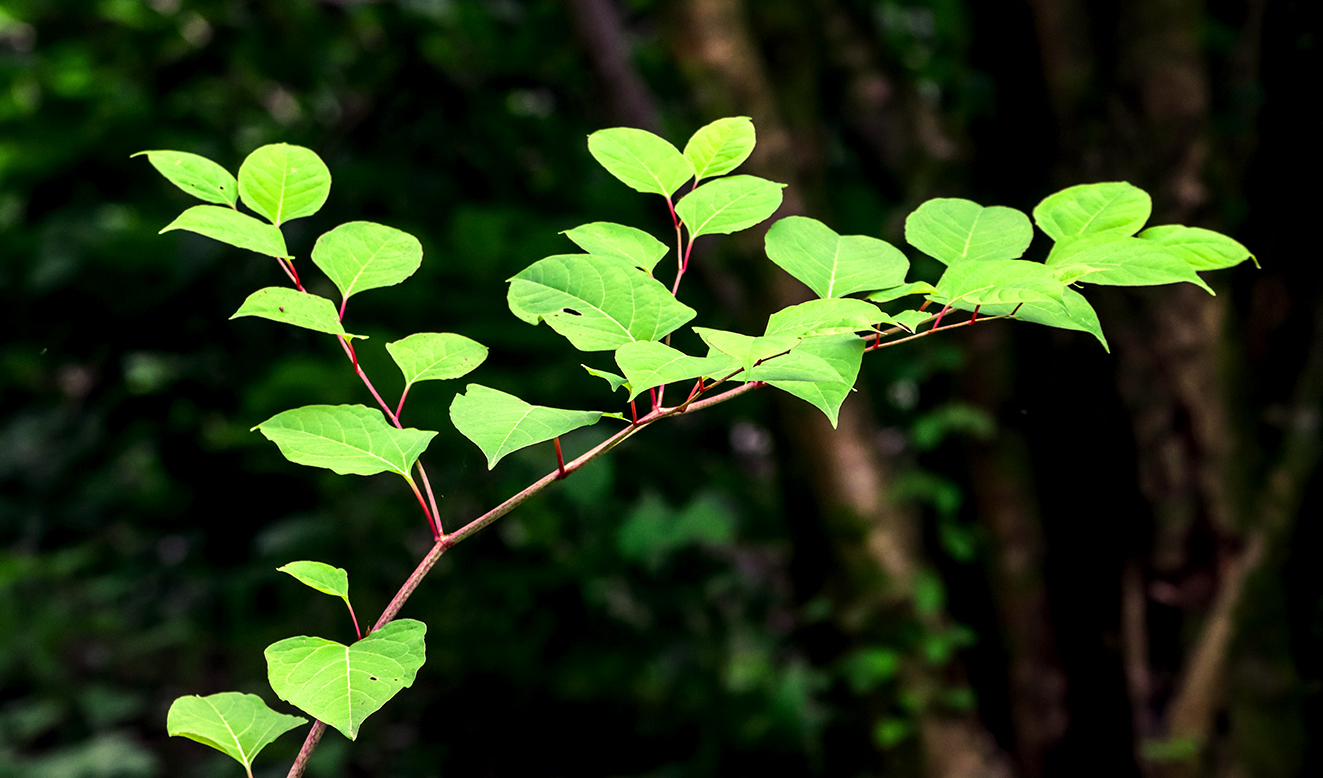
What Is Japanese Knotweed?
What is Japanese knotweed?
Japanese Knotweed is an invasive perennial weed in the UK, known for damaging structures due to its aggressive underground root system and fast growth.
Knotweed is an invasive and resilient species that requires special measures to control it, prevent it from spreading or remove it for good. Understanding what it is and the damage it can do is important for homeowners and business owners alike.
Our experts work all-year round to combat the spread of this invasive species and have worked to both successfully control the spread of the weed with herbicide treatments that kill visible part of the plant and force it into a dormant state, and complete removal of the contaminated ground to completely remove the Japanese knotweed.
If you want to know what Japanese Knotweed is, you’ve come to the right place.
So what is Japanese knotweed?
Japanese Knotweed is a resilient and tough weed. It has roots that can grow to a depth of 2 meters. These roots are known as rhizomes – they’re a special sort of root that is also a ‘shoot’. These stretch out horizontally and can extend up to 7 meters wide. These special root-systems are capable of growing new Japanese Knotweed plants independently.
Herbicide treatment can control the weed and can kill the surface growth and force the weed to go into a dormant state so that it won’t spring backup, but the deep underground root system is very resilient and re-growth can occur, especially if the contaminated ground is disturbed. Even a tiny amount of the rhizome as small as 0.5g can cause a knotweed outbreak. Due to this, it needs to be treated as special waste and moving it requires special waste-carrier licences!
Japanese Knotweed can cause damage, lower property value, make it difficult to get a mortgage and restrict amenity use. Because of this, it should never be ignored. This is why we have put together a helpful guide on how you can identify Japanese Knotweed, as well as a offering a free survey if Japanese knotweed is found on the property.
 Japanese knotweed has a signature ‘zig-zag’ leaf pattern with ‘tipped’ shovel-shaped leaves. It’s got red stems, bamboo like shoots and its leaves turn a luscious green in summer.
Japanese knotweed has a signature ‘zig-zag’ leaf pattern with ‘tipped’ shovel-shaped leaves. It’s got red stems, bamboo like shoots and its leaves turn a luscious green in summer.
How did knotweed get to the UK?
In 1850, the Leiden nursery despatched an unsolicited parcel of plants, including Japanese knotweed, to the Royal Botanical Gardens at Kew. In 1854 a knotweed specimen arrived at the Royal Botanic Gardens in Edinburgh. This is the same year that a nursery in Kingston became the earliest recorded nursery to offer knotweed for sale in Britain. Thereafter it was sold and distributed by a large number of commercial nurseries and amateur enthusiasts and was reported as becoming naturalised in the UK by 1886.
The Risks of Knotweed
By the end of the Nineteenth Century and the beginning of the Twentieth, the dangers of the plant were becoming clear. An account of the flora of Alexandra Park in Oldham, published in 1887, saw how knotweed kept appearing “unexpectedly in nearly every piece of cultivated ground.”
Gertrude Jekyll, previously an ardent admirer of Dwarf Japanese knotweed (Fallopia japonica var. compacta), admitted in 1899 that knotweed should be planted with caution and that her beloved Dwarf knotweed must be reduced. In 1905, the Royal Horticultural Society urged readers of their Journal of the Royal Horticultural Society to not plant knotweed unless it was “most carefully kept in check”.
By this time, it was too late to reverse the impact of knotweed and the plants’ current status is increasing and invasive. Despite the warnings it was not until as late as 1981 that the British government saw fit to produce legislation that specifically controlled its sale and spread (The Wildlife and Countryside Act).
Knotweed contamination is so invasive that it requires special measures to treat, extract and dispose of.
Restrictions on Amenity Use
The presence of Japanese knotweed places a restriction on the use of land/property. The plants can grow in thick and tall clumps impeding access to and use of amenity areas. The area of ground affected by the plant is also greater than the visible above ground extent. The plant’s underground rhizomes (underground stems) spread out horizontally (as well as vertically) from the above-ground growth areas. The rhizome bearing ground/soils should not be disturbed or the plant is very likely to spread further.
Due to knotweed thriving on disturbance as a mechanism for spreading it places severe restrictions on the free unimpeded use of the property.
Reduction of Property Value
Due to amenity use restrictions, the potential for structural impacts, legal considerations, the cost of remediation or simply the stigma attached to the plant, its presence on property can result in a reduction of the property value. The diminution impact can vary depending on the extent of the problem offset by the property desirability. Having a Knotweed Management Plan in place is always recommended and will have a positive effect on valuation.
 Even idyllic houses Properties like these can suffer a loss in value if Japanese knotweed isn’t treated seriously.
Even idyllic houses Properties like these can suffer a loss in value if Japanese knotweed isn’t treated seriously.
Why is Japanese Knotweed so invasive?
Japanese Knotweed has only become a worldwide menace since leaving its natural environment in Asia. In its native habitat it is kept in check by natural means – in Japan at least 30 species of insect and 6 species of fungus feed on the plant. Outside of its natural habitat, these species do not exist, and, with no natural predators, the plant is thriving.
Trials to control knotweed growth
Some trials have been conducted using insects that feed off Japanese Knotweed, however – it will be a long time before the results of these trials are conclusive. Given that these insects only feed off the visible part of the weed, it will still require human intervention to tackle contaminated soil.
Wrapping up
Now you know more about Japanese Knotweed and the risks, you can keep an eye out for it on your property or business premises. Our free guide and identification service will put you in touch with expert advice and help you learn to spot the characteristics of the weed. And as always, if you have any concerns about the presence of Japanese knotweed on your property, you can request a free survey from us.
Until next time!

